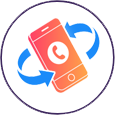Conveyor Belt Accident At Work – How To Claim Compensation
In this guide, we’ll be discussing when you could be eligible to make a personal injury claim after a conveyor belt accident at work and the process of doing so. We will look at the requirements that need to be met in order to seek compensation as well as the time limits in place for beginning a claim.
Employers owe their employees a duty of care. If they fail to uphold this, it has the potential to cause an accident in which an employee sustains harm. We will explore the responsibilities they have in more detail and how accidents could happen if these aren’t adhered to.
Additionally, we will discuss the steps you can take to make an accident at work claim, including the ways you can gather evidence and seeking legal advice from a personal injury solicitor.
If you have any further questions in regard to your potential claim, you can contact an advisor. They can provide a free case assessment to determine whether your claim is valid. If it is, they could assign your case to a No Win No Fee solicitor from our panel.
Contact us by:
- Calling us on 020 3870 4868
- Filling out your details via our ‘claim online’ form
- Talking with an advisor via the live chat feature below.
Browse Our Guide
- What Is A Conveyor Belt Accident At Work?
- What Are The Causes Of A Conveyor Belt Accident At Work?
- Evidence That Can Support A Work Accident Claim
- Compensation Amounts For A Conveyor Belt Accident At Work
- Can I Make An Accident At Work Claim With A No Win No Fee Solicitor?
- More Advice On Conveyor Belt Accident At Work Claims
What Is A Conveyor Belt Accident At Work?
A conveyor belt is a moving strip or surface that can be used to transport objects from one place to another. In order to make a personal injury claim for a conveyor belt accident at work, you need to demonstrate the following:
- Your employer owed you a duty of care at the time and place of the accident.
- They breached this duty of care.
- You experienced an injury, either physically or psychologically, as a result. This constitutes negligence, for which you could be eligible to seek personal injury compensation.
Employers owe a duty of care to their employees. This is outlined in Health and Safety at Work etc. Act 1974. This legislation states how an employer needs to take all steps that can be considered reasonable and practicable to prevent an employee from sustaining harm in the workplace or whilst carrying out work-related duties. They could fail to uphold this duty in the following ways:
- Providing inadequate training to an employee resulting in them using a machinery incorrectly.
- Failing to regularly maintain machinery.
- Not carrying out risk assessments on a regular basis or addressing the hazards that arise.
How Much Time Is There To Make A Conveyor Belt Accident At Work Claim?
As per the Limitation Act 1980, a person generally has three years to begin their personal injury claim. This can be from the date of the injury.
However, there may be exceptions to the time limit which could apply to your specific circumstances. To learn more about these, get in touch using the details provided above. An advisor can also provide further guidance on when you could be eligible to seek compensation.
What Are The Causes Of A Conveyor Belt Accident At Work?
A conveyor belt accident at work could occur for various reasons. For example:
- Defects or lack of maintenance – If a conveyor belt isn’t properly maintained or has a defective part, this could lead to mechanical failure.
- Lack of guards or poor assembly – If a conveyor belt is assembled incorrectly, or has no guards, there is a larger risk of workers getting limbs stuck in the machinery. This could lead to traumatic amputations.
- Poor workstation design – Employers should ensure that their workers are able to perform their job comfortably at their workstations. For example, the belt may be too wide or too low down with insufficient room to stand.
- Lack of training provided by employers – Without proper training employees could be injured whilst using a conveyor belt as they are unsure how to use the machinery correctly.
- A conveyor belt is overloaded or is too fast – A conveyor belt may be sped up to increase productivity, but this increases the risk of items falling off and injuring employees.
Evidence That Can Support A Work Accident Claim
When making a conveyor belt accident at work claim, it’s important that you’re able to provide evidence to prove that your injuries were caused as a result of an employer breaching the duty of care they owed. The steps you can take to gather evidence can include:
- Obtaining CCTV footage showing the accident
- Taking pictures of the hazard that caused the accident
- Collecting the contact information of any witnesses who are able to provide a statement at a later date
- Requesting a copy of the entry detailing the incident in the accident report book
- Requesting a copy of your medical records
- Keeping hold of receipts or invoices to prove any financial losses
If you’re finding it difficult to gather any evidence, you could benefit from working with a solicitor from our panel. They could help you collect evidence as well as assist in building and presenting your case in full. To find out whether they could handle your claim, get in touch on the number above.
Compensation Amounts For A Conveyor Belt Accident At Work
After making a successful personal injury claim you could receive two separate heads of claim as part of your settlement.
The first head of claim aims to compensate you for the pain and suffering, both physical and emotional, that you suffer as a result of your injuries. This is awarded under general damages. In order to calculate the value of your injuries, solicitors can use the Judicial College Guidelines.
This document contains a list of guideline compensation brackets that correspond to various types of injuries. The table below includes some of these figures. Please only use them as a guide, however, because your actual settlement could vary depending on your specific circumstances.
| Injury | Severity | Compensation Brackets | Notes |
|---|---|---|---|
| Head Injury | Very Severe (a) | £282,010 to £403,990 | Cases involving no meaningful response to the environment, an impact on language function and the requirement for full-time care. |
| Head Injury | Moderate (c) (i) | £150,110 to £219,070 | There is an intellectual deficit of a moderate to severe nature, a change in personality and an impact on senses. |
| Arm Amputation | Loss Of One Arm (b) (i) | Not less than £137,160 | One arm is amputated at the shoulder. |
| Arm Amputation | Loss Of One Arm (b) (ii) | £109,650 to £130,930 | An amputation of one arm above the elbow. |
| Leg Injuries | Severe Leg (b) (i) | £96,250 to £135,920 | This bracket covers cases where fractures haven’t united and there has been the requirement for extensive bone grafting. |
| Hand Injuries | Serious Damage To Both Hands (b) | £55,820 to £84,570 | Injuries cause a permanent cosmetic disability as well as a significant loss of function. |
| Hand Injuries | Less Serious (g) | £14,450 to £29,000 | A severe crush injury that results in function being significantly impaired despite surgery. |
| Arm Injuries | Injuries Resulting in Permanent and Substantial Disablement (b) | £39,170 to £59,860 | Serious fractures to one or both forearms. There will be a significant and permanent disability. |
| Wrist Injuries | Less Severe (c) | £12,590 to £24,500 | Injuries lead to a permanent disability such as ongoing pain and stiffness. |
| Injuries to the Elbow | Less Severe (b) | £15,650 to £32,010 | Injuries causing an impairment of function but not involving any major surgery. |
Can I Receive Special Damages?
The second head of claim reimburses for any financial losses that you have incurred as a result of your injuries. This is awarded under special damages. For example, you could claim back the cost of:
- Medical expenses, such as prescriptions
- Travel costs, such as buses or taxis to and from medical appointments
- Loss of earnings, if you have needed to take time off work
- Care costs, such as domestic care that you need to help you with day to day activities
Evidence such as receipts, payslips and invoices could help to prove these losses.
For more information on the compensation you could be awarded after making a successful workplace accident claim, get in touch using the number above. An advisor can provide an accurate estimate of what your claim could be worth.
Can I Make An Accident At Work Claim With A No Win No Fee Solicitor?
If you choose to make a claim with a solicitor from our panel, they might offer to work your claim under a type of No Win No Fee agreement called a Conditional Fee Agreement (CFA). Typically, under a CFA, the following can apply:
- When accessing your solicitor’s services, you won’t be expected to pay upfront or during the course of your claim.
- Upon the completion of an unsuccessful claim, you won’t need to pay your solicitor for the work they have done.
- Following a successful claim, you will need to pay a success fee. from your compensation. However, this is subject to a legal cap which is outlined in the Conditional Fees Agreements Order 2013.
Contact Us
If you would like to discuss working with a solicitor from our panel under No Win No Fee terms, you can get in touch with an advisor. They can assess the eligibility of your case for free. If they find it’s valid, they can connect you with a solicitor who has experience handling accident at work claims. To get in touch, you can:
- Call on 020 3870 4868
- Fill in the ‘claim online’ form
- Speak with an advisor through the live chat function below.
More Advice On Conveyor Belt Accident At Work Claims
Below, we have provided more of our guides relating to workplace accident claims:
- How do you prove employer liability?
- Can you sue your employer if you get hurt on the job?
- What are the most common accident at work claims?
We have also included useful external links:
- GOV – Statutory Sick Pay
- NHS – First Aid
- Health and Safety Executive – Workplace Accident Statistics
Thank you for reading this guide on when you could be eligible to start a personal injury claim after a conveyor belt accident at work. If you have any other questions about the process involved in doing so, you can get in touch with an advisor using the details provided above.




